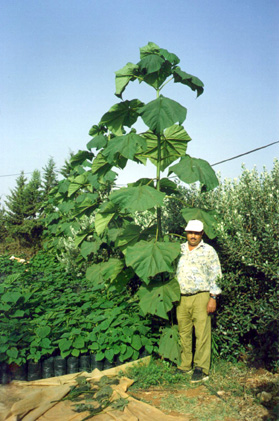
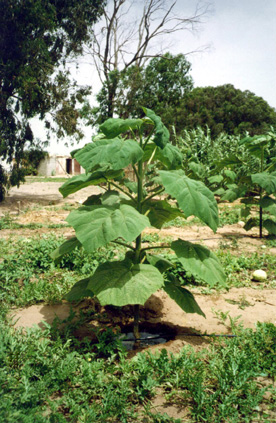 In many parts of the developing world, forested land is rapidly giving way to expanding farms and cities. This shrinkage of forests results in increased soil erosion, decreased soil moisture storage capacity and decreased humidity in the region. These phenomena have a cascade effect through the region's ecosystems and environment, leading to increased temperature, altered rainfall patterns and weaker soil profiles.
In many parts of the developing world, forested land is rapidly giving way to expanding farms and cities. This shrinkage of forests results in increased soil erosion, decreased soil moisture storage capacity and decreased humidity in the region. These phenomena have a cascade effect through the region's ecosystems and environment, leading to increased temperature, altered rainfall patterns and weaker soil profiles.
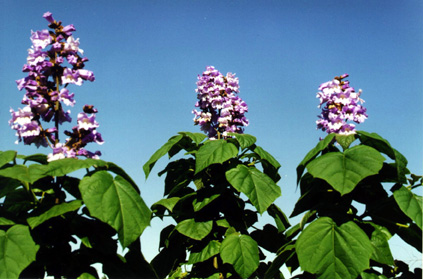 The Paulownia tree provides a unique and ideal solution to this problem. It is a fast growing hardwood tree, capable of attaining a height of 6-7m in the first year. The large leaves, which can attain sizes of up to 80cm in the first year, provide shade and decreased temperature and, once they molt, enrich the soil. The Farm has bred separate varieties of Paulownia adapted for use as ornamentals or in timber production;
The Paulownia tree provides a unique and ideal solution to this problem. It is a fast growing hardwood tree, capable of attaining a height of 6-7m in the first year. The large leaves, which can attain sizes of up to 80cm in the first year, provide shade and decreased temperature and, once they molt, enrich the soil. The Farm has bred separate varieties of Paulownia adapted for use as ornamentals or in timber production;  beginning with a stock of P. tomentosa and P. elongata, we selected trees based on such characteristics as branching pattern, canopy shape, leaf size, drought tolerance and rate of growth. These two new varieties, along with the mother cultivars, are now propagated in vitro in our lab. Please contact us if you would like to order Paulownia trees for timber production or landscaping projects.
beginning with a stock of P. tomentosa and P. elongata, we selected trees based on such characteristics as branching pattern, canopy shape, leaf size, drought tolerance and rate of growth. These two new varieties, along with the mother cultivars, are now propagated in vitro in our lab. Please contact us if you would like to order Paulownia trees for timber production or landscaping projects.
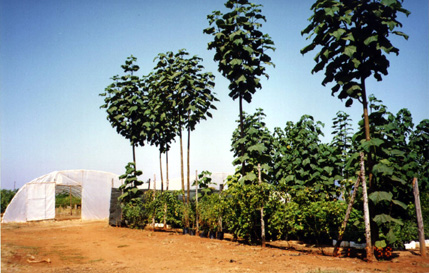
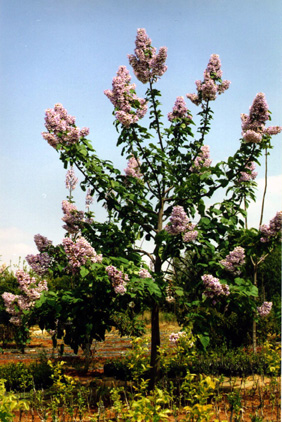 Paulownia requires very little from the grower and can be readily intercropped. If properly cared for, a single tree will yield one cubic meter of high quality wood in 8-10 years; a new stem will then shoot from the roots, allowing a single plantation to be harvested several times. For more detailed information, download our Paulownia booklet (also available in french and as a smaller, low-resolution version) or get in touch.
Paulownia requires very little from the grower and can be readily intercropped. If properly cared for, a single tree will yield one cubic meter of high quality wood in 8-10 years; a new stem will then shoot from the roots, allowing a single plantation to be harvested several times. For more detailed information, download our Paulownia booklet (also available in french and as a smaller, low-resolution version) or get in touch.

